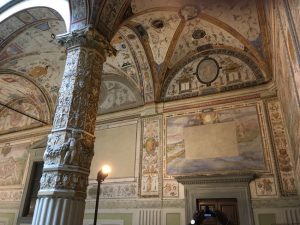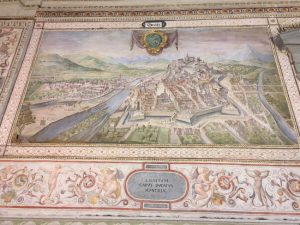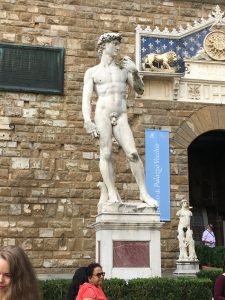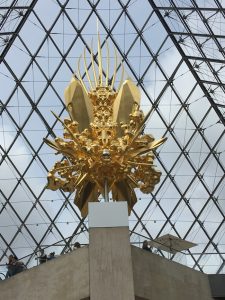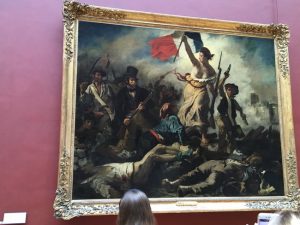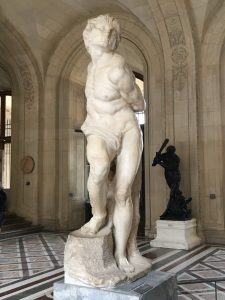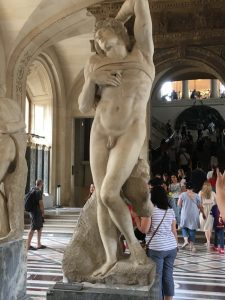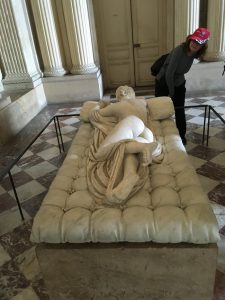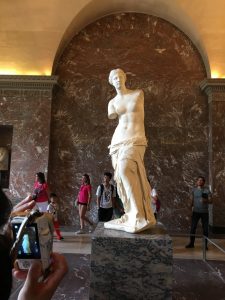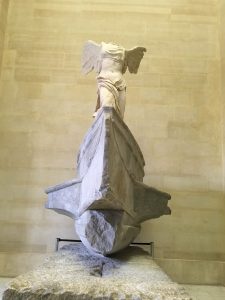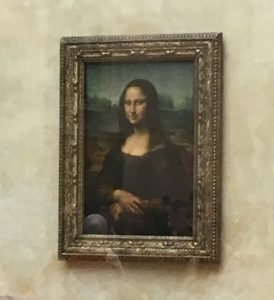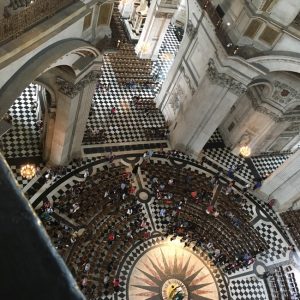Tag Archive
activity architecture art artist building Canada children city CostSaver downtown drive i-95 entertainment Europe event exhibit family festival Florida food fun historic History landmark local Museum music Nature New Zealand Ontario roadtrip sculpture Seattle show sights sightseeing tour tourist Trafalgar travel travelblogger view Washington Washington State water world
Italy, Florence: Florence’s City Hall
It is free to wander thru the Cortile (courtyard) di Michelozzi of the Palazzo Vecchio (townhall of Florence). One reason to come here is to see a copy of Michaelangelo’s statue of David. The original sat here from 1504 to 1873, when it was moved to the Accademia Gallery. This replica erected in 1910 now stands in its place.
The first courtyard of Palazzo Vecchio was designed in 1453 by Michelozzo. The frescoes on the walls were painted in 1565 by Giorgio Vasari for the wedding celebration of Francesco I de’ Medici, the eldest son of Cosimo I de’ Medici, to Archduchess Johanna of Austria, sister of the Emperor Maximilian II. They depict cities of the Austrian Habsburg monarchy: Graz, Innsbruck, Linz, Vienna, Hall in Tirol, Freiburg im Breisgau and Konstanz.
Italy, Florence: David Statue in Florence
This is one of the more famous copies of Michelangelo’s David statue. You don’t have to pay to go in to see it, it’s out on Piazza della Signoria in front of Palazzo Vecchio (city hall) The original statue was originally placed here from 1504 to 1873, when it was moved to the Accademia Gallery. This replica erected in 1910 now stands in its place.
France, Paris: The Throne in the Palace of the Louvre
.
France is celebrating 160th anniversary of diplomatic ties between France and Japan. Japonismes 2018: Les Ames en Resonance, will run through February 2019 involving exhibitions and events promoting Japanese art and design. Visual artist Kohei Nawa’s monumental sculpture “Throne” has one of the most prestigious spots in Paris: the Louvre. “I see the location as a connecting portal of modern lifestyles and the past, says Nawa, the Kyoto-based artist whose 10.4-meter-tall work is installed under I.M. Pei’s 1989 glass pyramid in the Louvre’s main courtyard.
The making of the throne itself involved both the past and the present. It was designed using state-of-the-art 3D modeling software and carved by robotic arms, however its gleaming gold leaf exterior was hand-applied by Japanese traditional craftspeople.
“The maximum capacity the pyramid can hold is 3 tons, so I told the museum I would ship a sculpture weighing exactly 3 tons,” says Nawa about the work’s creation. “I think they were bit worried, but after it went up, the Louvre’s curator, Martin Kiefer, told me the sculpture looks like it’s been at the pyramid all along.”
It’s not Nawa’s first “Throne” and it is different in that in previous iterations there was usually a small child seated within Nawa’s unique abstract shapes and geometric forms. For the Louvre, the seat is strikingly empty.
“Thrones are for kings. Here, the seat is for the authority that will eventually take over the control in the future. I left the seat empty to emphasize the invisibility,” says Nawa.
It sounds ominous, but Nawa goes on to explain that he foresees the type of power we see controlling today’s politics, economy and lifestyles as disappearing in the future, and in its place will be a very different form of authority. It could be artificial intelligence and advanced computer technology that will “take the throne,” he suggests, while we blindly follow, something that history has shown us that humans have had the tendency to do.
To us it is interesting that he chose a throne to be placed in this, the Palace of the Louvre, where French Kings sat on their thrones. Francis I chose this edifice as the residence for French kings and where it remained thus until good old King Louis XIV decided to move to Versailles and this building was then used to store his pretty things.
France, Paris: Liberty Leading the People in the Louvre
.
Though foreigners flock to see the Mona Lisa, to the French, the most important painting in the Louvre – the unofficial national painting of France is this one, Liberty Leading the People by Delacroix. The bare-breasted female figure, who is called Marianne became a symbol of Liberty for the French Republic. Though Delacroix painted the July Revolution of 1830, the broken bodies beneath the flag depict the 40 years of civil war, political and social upheavals necessary to conquer the monarchy in order to win a representative government. The huge 8′ by 10′ scale adds to the dramatic patriotism.
France, Paris: The Unnerving Raft of the Medusa at the Louvre
.
If you think life is tough, think of all the sailors that went out into the unknown seas. The shipwrecked Madusa, was left with 115 out of the original 400 sailors on board. There was very little food and water but lots of wine which led to heavy drinking, murder, mutiny and cannibalism. When rescued, only 15 were left alive. This work by Theodore Gericault’s was a seismic shift in art from the stiff neo-classicism of the past to the dramatic and emotional Romanticism in art. It is more of the most macabre painting in the Louvre.
France, Paris: Michelangelo’s Slaves
.
With everyone crowding in to see the Mona Lisa, you can head elsewhere in the Louvre Museum to find 100’s of other famous artists’ works, starting with Michelangelo. He was so brilliant at coaxing human emotions out of the stone. Here are two representations of slaves so painfully showing their despair.
France, Paris: Sleeping Hermaphroditus
.
At first glance this looks like a naked woman sleeping on a very soft cushioned bed but you would be mistaken on both counts. Originally found in the Borgehese gallery in Rome, obviously ancient audiences were comfortable with mixed gender concepts. She might be a he, and Bernini the master sculptor has made marble appear so soft.
France, Paris: Venus, Samothrace, and Mona
.
Three of the most recognized pieces of art in the world. The Venus de Milo (found on the Greek island of Milo) is over 200o yrs old and is still seen as the epitomy of classical female beauty. The Winged Victory of Samothrace is a mastery of carving – just notice the wind ruffling her 2200-year- old dress. And dear old Mona, our guide said she has that secret smile because she knows where Rodin hid The Thinker’s clothing! (See him at the Rodin Museum here in Paris)
Great Britain, London: St. Paul’s Cathedral Whispering Gallery
.
